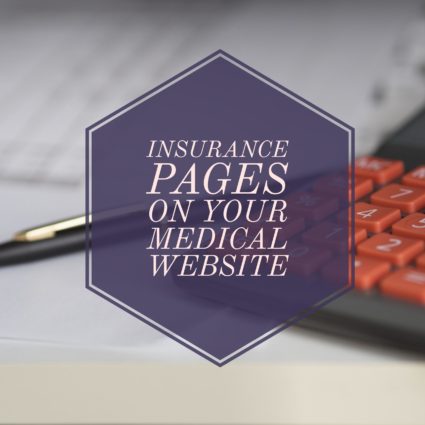Your cart is currently empty!

Your Website’s Insurance Page
The path to purchase for healthcare consumers is well documented. People start by looking for information about their health concerns, move on to explore specific treatment options, and finally compare providers of those treatments. Once they end up at your website, though, they overwhelmingly want the answer to one question: will you accept their insurance? Your insurance page must give a clear answer to this question — fast.
Insurance reassurance

You may not need a great deal of detail in order to answer the basic patient question. Your potential new patients don’t want to come to an appointment and then discover that their insurance isn’t welcome at your office — but usually they just need reassurance on this point. More Americans have health insurance now, and often a general statement will be enough. In the screenshot above, this reassuring statement is on the About Us page.
Insurance information

If it’s more complicated than that, put your insurance page in your navigation so it’s easy to find. In the screenshot above, we’ve placed the page as a subheading under Patient Tools.
When visitors click through, they find extensive information, including a link to contact a patient billing advocate and links to opportunities to get health insurance if they don’t already have it. This page also includes information about Medicaid, Medicare, and other public health programs. If you have this much information, you should have a dedicated insurance page at your website.

Insurance updates
Prospective new patients need to find out whether you’ll accept their insurance, and they may never return to your insurance page once they get the answer. But you can provide new and old patients with more valuable information. Your current patients may not really be sure what’s covered, for example.

A blog post can provide that information. The post above lets patients know about new possibilities. It also shows up in search — for potential new patients as well as current patients.

Providing insurance information may not require a separate insurance page — or it might involve that special page plus additional information in your blog. Either way, make sure that the answer to that #1 question is easy to find at your website.
by
Tags:
Comments
2 responses to “Your Website’s Insurance Page”
You are so interesting! I do not believe I have read something like this before.
So great to discover somebody with some original thoughts on this issue.
Seriously.. thanks for starting this up. This site is something that’s needed on the internet, someone with a bit of originality!Thanks!


Leave a Reply